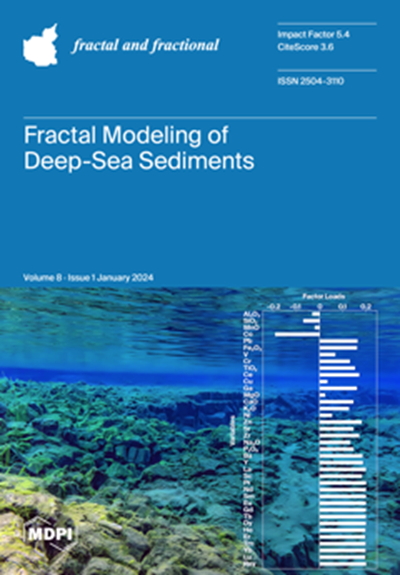Fractal Tent Map with Application to Surrogate Testing
IF 3.6
2区 数学
Q1 MATHEMATICS, INTERDISCIPLINARY APPLICATIONS
引用次数: 0
Abstract
Discrete chaotic maps are a mathematical basis for many useful applications. One of the most common is chaos-based pseudorandom number generators (PRNGs), which should be computationally cheap and controllable and possess necessary statistical properties, such as mixing and diffusion. However, chaotic PRNGs have several known shortcomings, e.g., being prone to chaos degeneration, falling in short periods, and having a relatively narrow parameter range. Therefore, it is reasonable to design novel simple chaotic maps to overcome these drawbacks. In this study, we propose a novel fractal chaotic tent map, which is a generalization of the well-known tent map with a fractal function introduced into the right-hand side. We construct and investigate a PRNG based on the proposed map, showing its high level of randomness by applying the NIST statistical test suite. The application of the proposed PRNG to the task of generating surrogate data and a surrogate testing procedure is shown. The experimental results demonstrate that our approach possesses superior accuracy in surrogate testing across three distinct signal types—linear, chaotic, and biological signals—compared to the MATLAB built-in randn() function and PRNGs based on the logistic map and the conventional tent map. Along with surrogate testing, the proposed fractal tent map can be efficiently used in chaos-based communications and data encryption tasks.分形帐篷图在替代测试中的应用
离散混沌图是许多有用应用的数学基础。其中最常见的是基于混沌的伪随机数发生器(PRNGs),它在计算上应该是廉价和可控的,并具有必要的统计特性,如混合和扩散。然而,混沌伪随机数发生器有几个已知的缺点,如容易发生混沌退化、周期短、参数范围相对较窄等。因此,设计新颖的简单混沌图来克服这些缺点是合理的。在本研究中,我们提出了一种新型分形混沌帐篷图,它是对众所周知的帐篷图的概括,在右侧引入了分形函数。我们构建并研究了基于所提图谱的 PRNG,通过应用 NIST 统计测试套件显示了其高水平的随机性。我们还展示了所提出的 PRNG 在生成代用数据和代用测试程序任务中的应用。实验结果表明,与 MATLAB 内置的 randn() 函数以及基于逻辑图谱和传统帐篷图谱的 PRNG 相比,我们的方法在三种不同信号类型--线性信号、混沌信号和生物信号--的代理测试中具有更高的准确性。除了代理测试,所提出的分形帐篷图还能有效地用于基于混沌的通信和数据加密任务。
本文章由计算机程序翻译,如有差异,请以英文原文为准。
求助全文
约1分钟内获得全文
求助全文
来源期刊

Fractal and Fractional
MATHEMATICS, INTERDISCIPLINARY APPLICATIONS-
CiteScore
4.60
自引率
18.50%
发文量
632
审稿时长
11 weeks
期刊介绍:
Fractal and Fractional is an international, scientific, peer-reviewed, open access journal that focuses on the study of fractals and fractional calculus, as well as their applications across various fields of science and engineering. It is published monthly online by MDPI and offers a cutting-edge platform for research papers, reviews, and short notes in this specialized area. The journal, identified by ISSN 2504-3110, encourages scientists to submit their experimental and theoretical findings in great detail, with no limits on the length of manuscripts to ensure reproducibility. A key objective is to facilitate the publication of detailed research, including experimental procedures and calculations. "Fractal and Fractional" also stands out for its unique offerings: it warmly welcomes manuscripts related to research proposals and innovative ideas, and allows for the deposition of electronic files containing detailed calculations and experimental protocols as supplementary material.
 求助内容:
求助内容: 应助结果提醒方式:
应助结果提醒方式:


